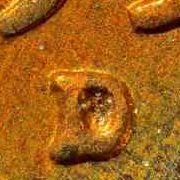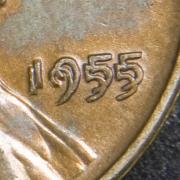Correction of my earlier images showing orientation of die to the buffing wheel. I only rotated the prior images but failed to also flip them in the process. My bad.
Welcome guest, is this your first visit? Click the "Create Account" button now to join.
Results 41 to 50 of 163
-
07-07-2017 #41
-
07-07-2017 #42All opinions expressed are not necessarily shared by willbrooks or his affiliates. Taking them may result in serious side effects. Results may vary. Offer not valid in New Jersey.
-
Post Thanks / Like - 1 Thanks, 1 Likes
 jallengomez thanked for this post
jallengomez thanked for this post
 jallengomez liked this post
jallengomez liked this post
-
07-07-2017 #43All opinions expressed are not necessarily shared by willbrooks or his affiliates. Taking them may result in serious side effects. Results may vary. Offer not valid in New Jersey.
-
Post Thanks / Like - 1 Thanks, 0 Likes
 jallengomez thanked for this post
jallengomez thanked for this post
-
07-07-2017 #44
-
07-07-2017 #45
-
07-07-2017 #46
Photos by Ray Parkhurst. These are quite revealing!
Last edited by willbrooks; 07-07-2017 at 11:49 AM.
All opinions expressed are not necessarily shared by willbrooks or his affiliates. Taking them may result in serious side effects. Results may vary. Offer not valid in New Jersey.
-
Post Thanks / Like - 1 Thanks, 0 Likes
 jallengomez thanked for this post
jallengomez thanked for this post
-
07-07-2017 #47
I am sorry, but I cannot agree with your theory. You must prove that something that is harder than the steel die went into the design element and extend it in the form of a line that has a knife edge shape. Are you saying that a single wire did this? Or that some element on a buffing machine, which is harder than the steel die, made this groove? If so, there should be other lines that do not originate from design elements
Some other things to consider. Trails have NEVER been found on all the design elements on a die; the most is approximately 2/3 of the die face. Why is this so? How do you explain the trails found on the 1869, 4 Centavo Uruguay coin? Or the 1921-S Morgan dollar reverses? How do you explain the trails found on various coinage from other countries? Do they use the same buffing equipment as the U. S. Mint?
I have been studying this die anomaly for 15 years and can honestly say that I put die polishing out of my mind as the cause for many reasons. The most important of which is that I can not isolate the exact item that could create such a singular engraved line in a steel die.
There is one more point to look at and I'll let you figure it out. Find a die that has trail lines originating from one design element and have that trail line cross over another design element. What do you see?
BJ NeffANA, CCC, CONECA, FUN, Fly-In-Club, NLG & "The Error-Variety Education Consortium"
-
Post Thanks / Like - 3 Thanks, 3 Likes
-
07-07-2017 #48
Awesome photos... Thanks for that follow up Will... I appreciate it... I have not read the article yet... I am going to get a hard copy of the magazine and have been unable to get to the store yet... From this thread I think it is going to be an excellent article... Looks like you put a lot of work into your research!!!
Jim
(A.K.A. Elmer Fudd) Be verwy verwy quiet... I'm hunting coins!!! Good Hunting!!!
Be verwy verwy quiet... I'm hunting coins!!! Good Hunting!!!
-
07-07-2017 #49
Buffing compound is made of small particles of materials that are harder than the hardened steel die. Individual buffing wheel threads (or gathered clumps of threads) with buffing compound on them could do a similar thing as single wires of a wire wheel (ie gathering within a die recess or alongside a die protrusion), resulting in a wear pattern that shows strong abrasion near the edge of the recess and diminishes farther from the recess. A prime example of this is the first pic on this page, where the caption reads "Enters the field here".
Builder of Custom Coin Photography Setups. PM me with your needs or visit http://macrocoins.com
-
Post Thanks / Like - 3 Thanks, 4 Likes
-
07-07-2017 #50
Occam's razor.
I think anyone who has tried to buff an area of spackle that had an incuse area can understand the idea. Or as Pete put it in another example, buffing or sanding wood that has incuse elements.
At this point, it's not going to be proof of the current theory simply because no one knows what polishing method was used on a 1869 4 Centavo coin from Uruguay, nor does logic demand that explanation. It's simply enough to understand the polishing theory. The only way for the current "die motion" theory to survive is by a refutation of the counterarguments Will made in the article, and I believe those counterarguments show the impossibility of the current theory being correct.
“You can always recognize truth by its beauty and simplicity.”
— Richard P. Feynman“What can be asserted without evidence can also be dismissed without evidence.”
-
Post Thanks / Like - 1 Thanks, 1 Likes
 willbrooks thanked for this post
willbrooks thanked for this post
 willbrooks liked this post
willbrooks liked this post







 Reply With Quote
Reply With Quote






Bookmarks